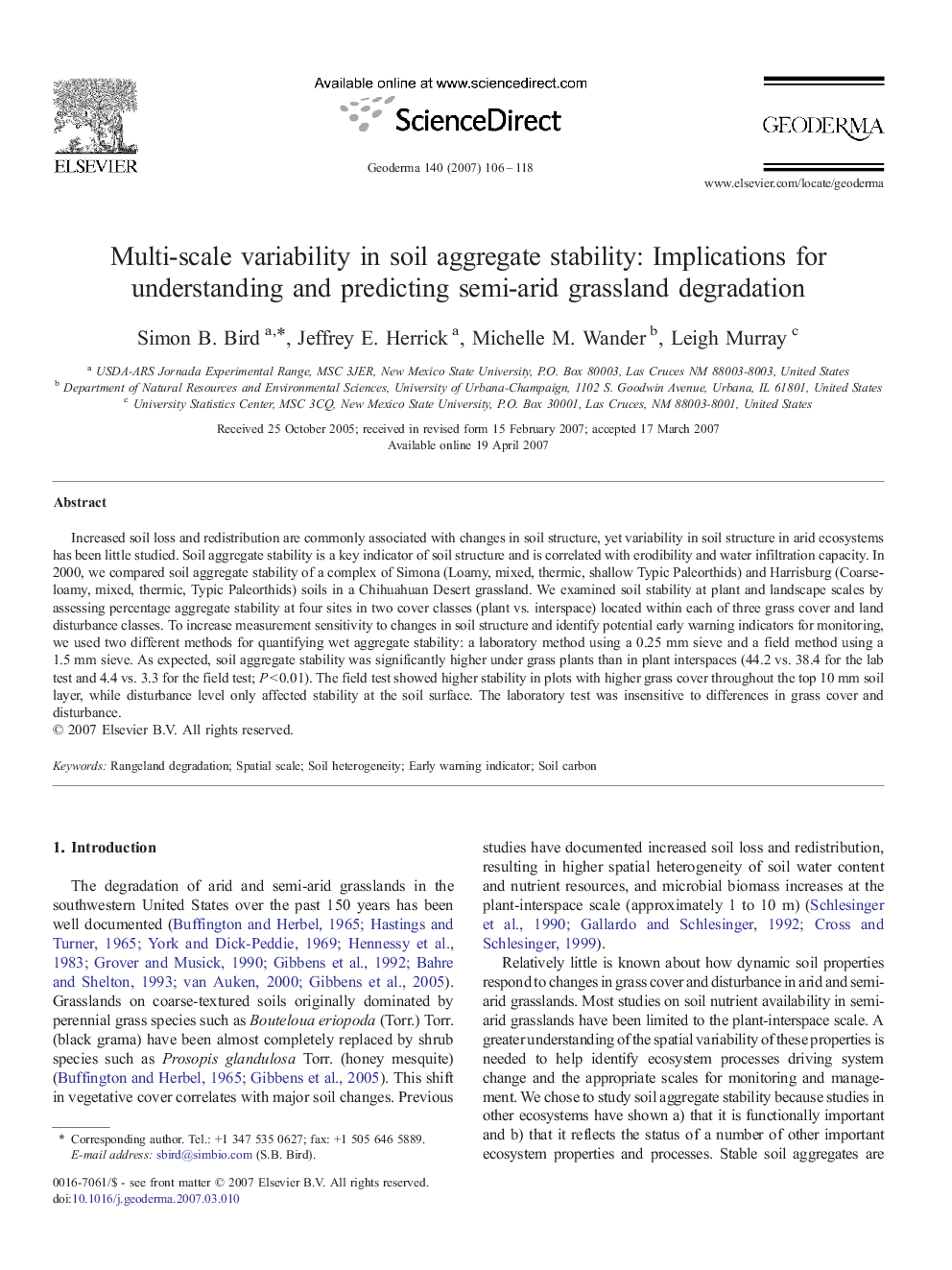| Article ID | Journal | Published Year | Pages | File Type |
|---|---|---|---|---|
| 4575402 | Geoderma | 2007 | 13 Pages |
Increased soil loss and redistribution are commonly associated with changes in soil structure, yet variability in soil structure in arid ecosystems has been little studied. Soil aggregate stability is a key indicator of soil structure and is correlated with erodibility and water infiltration capacity. In 2000, we compared soil aggregate stability of a complex of Simona (Loamy, mixed, thermic, shallow Typic Paleorthids) and Harrisburg (Coarse-loamy, mixed, thermic, Typic Paleorthids) soils in a Chihuahuan Desert grassland. We examined soil stability at plant and landscape scales by assessing percentage aggregate stability at four sites in two cover classes (plant vs. interspace) located within each of three grass cover and land disturbance classes. To increase measurement sensitivity to changes in soil structure and identify potential early warning indicators for monitoring, we used two different methods for quantifying wet aggregate stability: a laboratory method using a 0.25 mm sieve and a field method using a 1.5 mm sieve. As expected, soil aggregate stability was significantly higher under grass plants than in plant interspaces (44.2 vs. 38.4 for the lab test and 4.4 vs. 3.3 for the field test; P < 0.01). The field test showed higher stability in plots with higher grass cover throughout the top 10 mm soil layer, while disturbance level only affected stability at the soil surface. The laboratory test was insensitive to differences in grass cover and disturbance.
